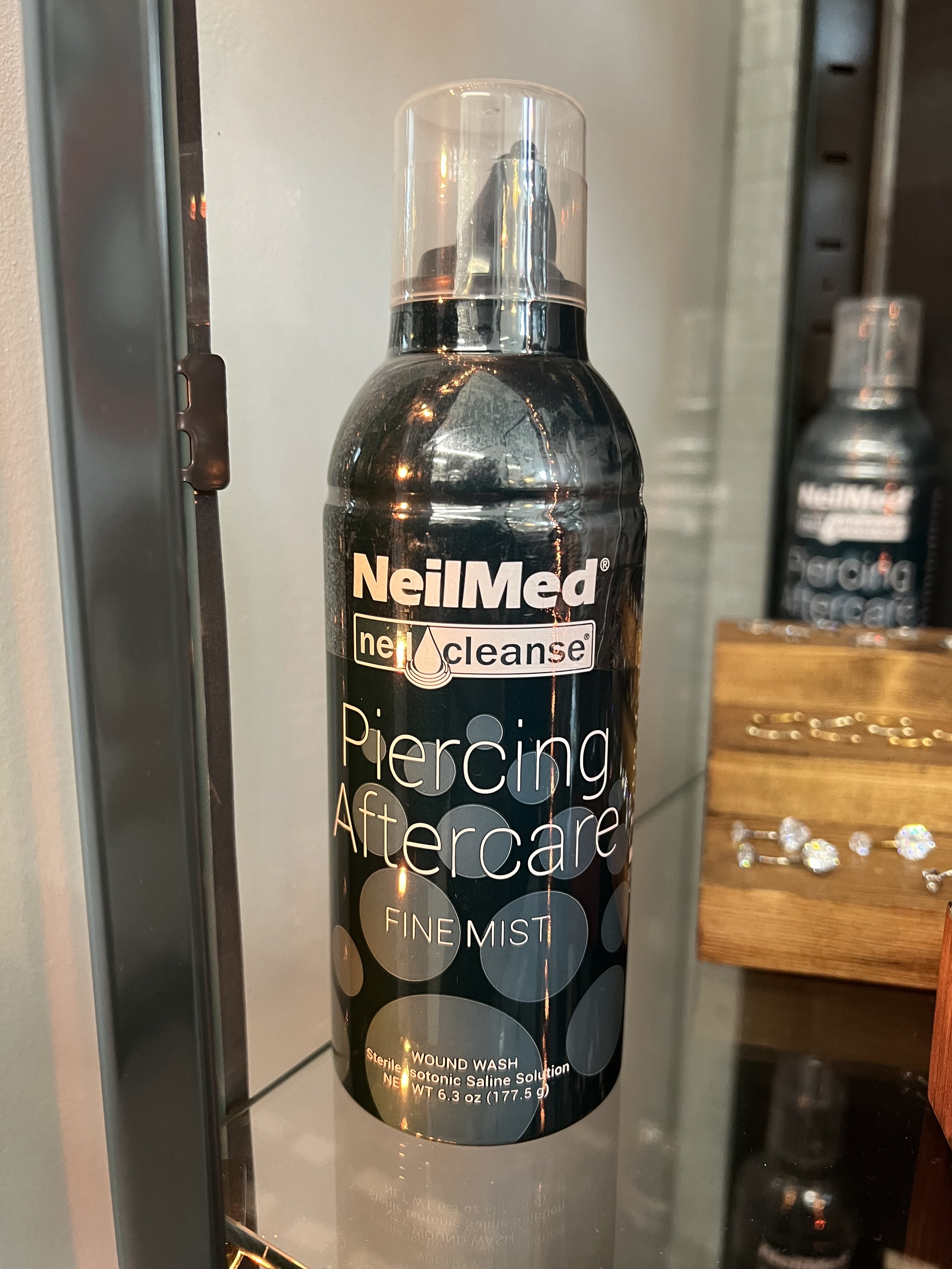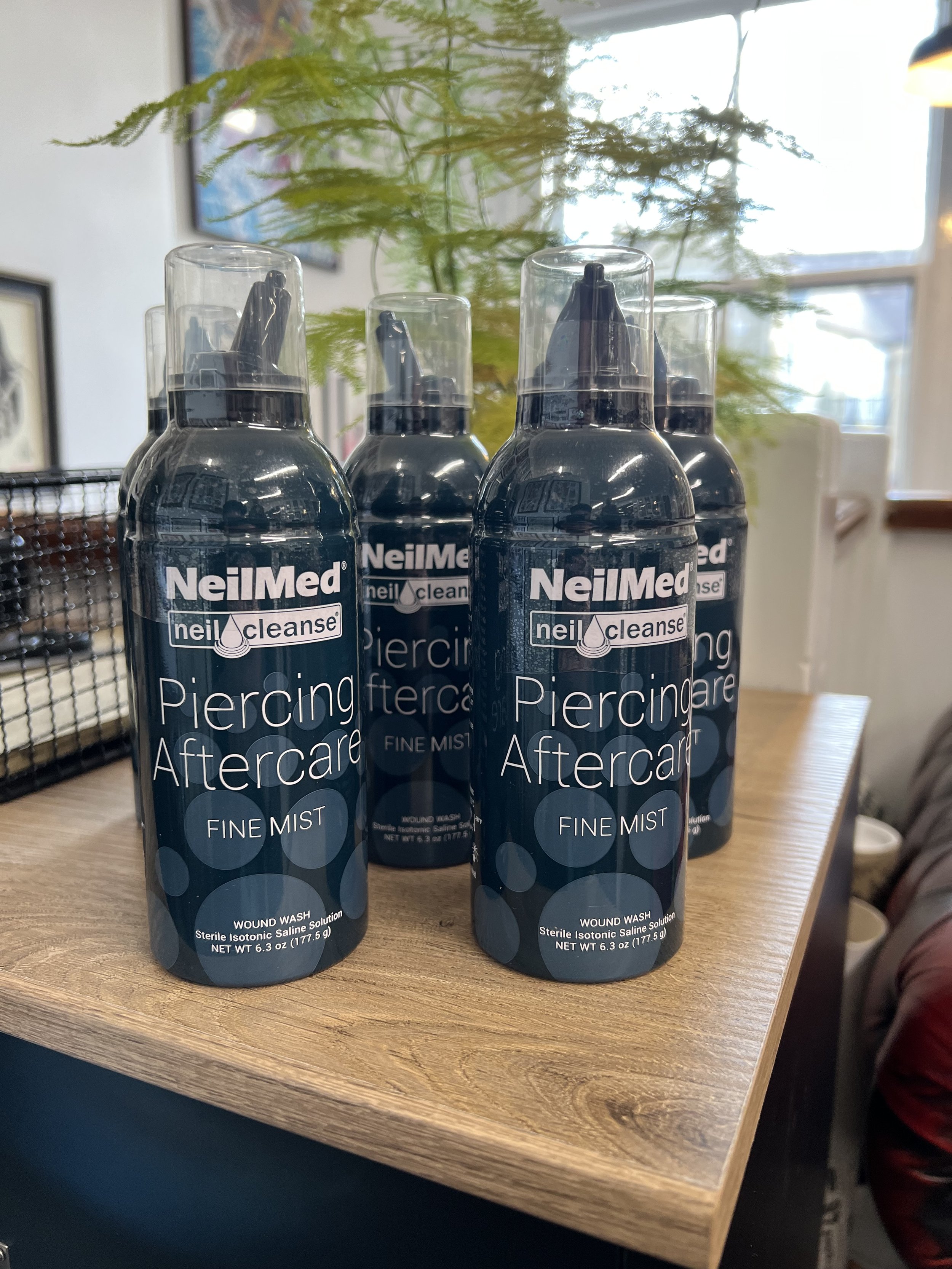What to Expect with a Fresh Piercing
When you first get a piercing, it’s completely normal for the area to be red, swollen, tender, and sometimes even a little bruised. If you accidentally knock or irritate it, bleeding can also happen.
During healing, you may notice the piercing secretes a clear, white, or pale yellow fluid that can dry and form a crust. This isn’t an infection — it’s called lymph, and it’s a very common and natural part of the healing process.
If you ever see a green discharge with an unpleasant smell, that’s a sign of infection and should be taken seriously.
What to expect when healing piercings
Everyone heals at their own pace, and this can depend on things like the type of piercing, where it’s placed, your lifestyle, and your overall health. Some piercings can take up to a year (or even a little longer) to fully heal, so don’t worry if yours takes time.
It’s really important not to remove or change your jewellery until your piercing has fully healed, except when downsizing is recommended to support the healing process.
Once healed, try to keep jewellery in for at least 12 months. If you need to remove it for any reason, wearing a retainer is strongly advised to prevent the piercing from closing.
Sleeping can sometimes be the trickiest part of healing, especially with ear piercings. A pillow with a hole in it can make a huge difference! You can use a simple U-shaped travel pillow, or treat yourself to a specially designed version online for extra comfort.
Cleaning Your Piercing
The best way to care for your new piercing is by using a pre-mixed sterile saline solution that comes in a spray can. These are specially designed so that no bacteria can get inside once the can has been opened. I recommend NeilMed Piercing Aftercare Fine Mist, which you can buy directly from me or online. There are other brands available, but this is the one I trust most.
Homemade Salt Water
I don’t recommend making a salt water solution at home. It’s very difficult to keep it sterile, even if you’re careful — bacteria can easily get into the container, or the water can be contaminated as it cools. On top of that, many people use the wrong type of salt, or mix the wrong ratio of salt to water.
If the mixture is too strong, it can dry out the skin and cause irritation bumps, which may lead to hypertrophic scarring if untreated.
If the mixture is too weak, it won’t clean effectively, which can increase the risk of infection and slow down healing.
If you do decide to make your own solution, make sure the container is as clean as possible. Use half a pint of boiling water with ¼ teaspoon of rock salt or sea salt (never table salt). Always let it cool fully before use, and make a fresh batch every single time you clean your piercing.
Downsizing Jewellery
When you get a new piercing, it’s always fitted with a slightly longer bar to allow room for the natural swelling that happens in the first few weeks. This swelling is completely normal.
Once the swelling has gone down, it’s really important to “downsize” your jewellery (swap to a shorter bar). This usually happens around 6–12 weeks after your piercing, and sometimes a second downsize is needed a few weeks later (around 4–12 weeks after the first). Downsizing is often done in stages to make sure your piercing heals as smoothly as possible.
If you don’t downsize when needed, the longer bar can move around too much, which may slow down healing, cause irritation, or even make your piercing heal at an angle.
Soothing Your Piercing & Supporting Healing
Both new and healed piercings can benefit from a hot compress. Warmth helps open up tiny blood vessels and supports lymphatic drainage, which can make your piercing feel calmer and more comfortable. Like anything, there are pros and cons to each method, but in most cases a warm compress will do more good than harm.
A warm compress may be especially useful if your piercing is:
Irritated, inflamed, or sore
Holding fluid or feeling “puffy”
Healing more slowly than expected
Producing more lymph (clear or pale fluid) than usual
The warmth can help soothe the area, draw out everyday pollutants (like dust, hairspray, or perfume), and encourage trapped fluid to drain.
Important Note on Hygiene
Just like making your own cleaning solution, creating a warm compress at home comes with risks. Our home environments aren’t sterile, and neither are most of the tools we use. This means there’s always a chance of introducing bacteria if you’re not very careful.
How to Make a Warm Saline Compress
Wash your hands thoroughly.
Take a clean pot with a lid and pour in some NeilMed sterile saline.
Place a piece of clean gauze into the pot and cover with the lid.
Microwave briefly — just enough to make the saline warm (not hot enough to burn you).
Once it’s at a safe temperature, press the gauze gently onto your piercing.
Hold in place for a few minutes, then remove and gently dry the piercing.
Piercing Aftercare
Do not over clean or unnecessarily touch any piercing during the healing process/period as this will aggravate and possibly cause infection. Do not sleep on a fresh piercing. Do not go swimming with a fresh piercing, i usually recommend not swimming for at least a month. Do not use anything i have not recommended to clean you piercing. It is highly important that you make sure your piercing is dry after cleaning it or getting it wet to prevent irritation from trapped moisture, you can ether use quality kitchen towel (plenty/bounty) or the easiest method is to use the cool setting on a hairdryer to make sure its dried thoroughly.
For all piercings, taking vitamins and other supplements such as Iron and Echinacea will help with the healing process.
If you have any problems, concerns or queries please don’t hesitate to pop back in and see me. Failing that, please send a message and I’ll try my best to help over messenger or email.
Email: ab_bodypiercing@hotmail.com
Instagram: ab_bodypiercing
Facebook: Alex Balding Body Piercing
To download full aftercare information please click below.
I only recommend using the NeilMed Piercing Aftercare Fine Mist Saline Solution for looking after your piercings. In my opinion this is the best aftercare on the market and i always keep it stocked for purchase in the shop.


